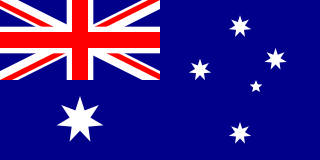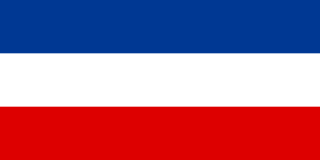
The 1992 Winter Paralympics were the fifth Winter Paralympics. They were the first Winter Paralympics to be celebrated with the International Olympic Committee cooperation. They were also the first ever Paralympics or a Winter Parasports event held in France. They were held at the resort of Tignes as a support venue of the main host city Albertville, France, from 25 March to 1 April 1992. For the first time, demonstration events in Alpine and Nordic Skiing for athletes with an intellectual disability and Biathlon for athletes with a visual impairment were held.

The 1992 Summer Paralympics were the ninth Paralympic Games to be held. They were held in Barcelona, Catalonia, Spain. In addition, the 1992 Paralympic Games for Persons with mental handicap were held immediately after the regular Paralympics in the Spanish capital, Madrid.

The 1988 Winter Paralympic Games were the fourth Winter Paralympics, held again in Innsbruck, Austria. These were the last Paralympics to be held in a separate location from the Olympics. Beginning in 1992, the Olympics and the Paralympics were held in the same city or in an adjacent city. These Paralympics were not held at the same Olympic venue in Calgary, Canada, because of financial and recruiting difficulties. A total of 377 athletes from 22 countries took part. The USSR competed for the first and only time. Sit-skiing was introduced as another event in both the Alpine and Nordic skiing competitions. Other sports were biathlon and ice sledge speed racing. Ice sledge speed racer Knut Lundstroem from Norway was the most successful athlete, winning four gold medals in the 100m, 500m, 1000m and 1500m events.

Iraq made its Paralympic Games début at the 1992 Summer Paralympics in Barcelona. It has competed in every edition of the Summer Paralympics since then, but never in the Winter Paralympics. Iraqi Paralympians have won a total of 18 medals: three gold, seven silver and eight bronze.

Liechtenstein made its Paralympic Games début at the 1984 Summer Paralympics in Stoke Mandeville and New York City, entering just one athlete in athletics. The country competed again at the 1988 and 1992 Summer Games, and at the 1992 and 1994 Winter Games. It was then absent from the Paralympics until the 2004 Summer Games in Athens, where it sent just one table tennis player, Peter Frommelt. Liechtenstein was absent from the 2006 and 2010 Winter Games and the 2008 Summer Games.

Namibia made its Paralympic Games début at the 1992 Summer Paralympics in Barcelona. These were the first Summer Paralympics to be held since the country's accession to independence from South Africa in 1990, and thus the first Games in which Namibia was able to take part. For its inaugural participation, the country sent just two athletes, both women, who both competed in discus, javelin and shot put. They did not win any medals.

The Dominican Republic made its Paralympic Games début at the 1992 Summer Paralympics in Barcelona, with track and field athlete Rodolfo del Rosario as its sole representative. The country has competed in every subsequent edition of the Summer Paralympics, except 2000, but has never taken part in the Winter Paralympics. Dominican Republic delegations have never contained more than two competitors.

Panama made its Paralympic Games début at the 1992 Summer Paralympics in Barcelona, with a delegation of two competitors in athletics. It has participated in every subsequent edition of the Summer Paralympics, but never in the Winter Paralympics. Panamanian delegations have always been small, never consisting in more than two competitors.

Uruguay made its Paralympic Games début at the 1992 Summer Paralympics in Barcelona, sending just two representatives to compete in track and field. The country has competed in every subsequent edition of the Summer Paralympics, but never in the Winter Paralympics. Its delegations have always been small, never consisting in more than three competitors.

Belgium made its Paralympic Games début at the inaugural Paralympic Games in Rome in 1960, and has participated in every edition of the Summer Paralympics. It also took part in the inaugural Winter Paralympics in 1976 in Örnsköldsvik, and has competed in every edition of the Winter Games except 1980, 1998 and 2002.

Belgium participated in the 1994 Winter Paralympics in Lillehammer, Norway. The country sent two competitors, both in alpine skiing. They entered a total of seven events between them.

Lithuania, following its independence from the Soviet Union, made its Paralympic Games début at the 1992 Summer Paralympics in Barcelona, with a delegation of four athletes in track and field. This first delegation was notably successful, with all four athletes winning at least one medal, and female runner Sigita Kriaučiūnienė sweeping up four medals. Kriaučiūnienė was also part of Lithuania's two person delegation for its first participation in the Winter Paralympics, in 1994. Lithuania has taken part in every subsequent edition of the Summer Paralympics, but has not returned to the Winter Games since 1994.

Belgium sent a delegation to compete at the 1984 Winter Paralympics, in Innsbruck, Austria.

Australia competed at the 1992 Winter Paralympics in Tignes and Albertville in France. They were the first winter Paralympics to be celebrated concurrently with the Olympic Games. The official logo of the Games was designed by Jean-Michel Folon. It depicts a bird with broken wings, soaring high across the peak of a mountain. This was used to reflect the sporting abilities of the athletes at the Games. The official mascot, Alpy, designed by Vincent Thiebaut, represented the summit of the Grande Motte mountain in Tignes. Alpy was shown on a mono-ski to demonstrate its athleticism and the colours of white, green and blue were used to represent purity/snow, hope/nature and discipline/the lake. The 1992 Games were where Australia won their first winter medals at the Paralympics. Michael Milton won Australia's first gold with a win in the men's slalom LW2. Milton also won a silver medal in the men's super-G LW2. At these Games, Australia was represented by 5 male athletes. Australia was placed 12th in the overall medal tally for the Winter Games winning a total of 4 medals: 1 gold, 1 silver and 2 bronze.

The Union of Serbia and Montenegro only competed at the Paralympic Games under that name at the 2004 Summer Paralympics in Athens. In 1992, its athletes competed as Independent Paralympic Participants. From 1996 to 2000, included, it was officially known as the Federal Republic of Yugoslavia. The International Paralympic Committee lists the country as "Yugoslavia" up to 2000, included, and considers that "Serbia and Montenegro" participated only in 2004. In 2006, the Union split into two sovereign countries, henceforth competing separately as Serbia and Montenegro.

Belgium competed at the 1992 Summer Paralympics in Barcelona, Spain. 73 competitors from Belgium won 17 medals including 5 gold, 5 silver and 7 bronze and finished 21st in the medal table.

Liechtenstein competed at the 1994 Winter Paralympics in Lillehammer, Norway. One competitor from Liechtenstein won a single bronze medal and finished joint 22nd in the medal table with Belgium, Czech Republic and Estonia.

Czechoslovakia competed at the 1992 Winter Paralympics in Tignes/Albertville, France. 16 competitors from Czechoslovakia won 6 medals, 4 silver and 2 bronze, and finished 14th in the medal table.

Belgium competed at the 1976 Winter Paralympics in Örnsköldsvik, Sweden. 5 competitors from Belgium won 0 medals and finished 10th in the medal table.

Belgium competed at the 1988 Winter Paralympics in Innsbruck, Austria. Two competitors from Belgium won zero medals and finished 16th in the medal table.














